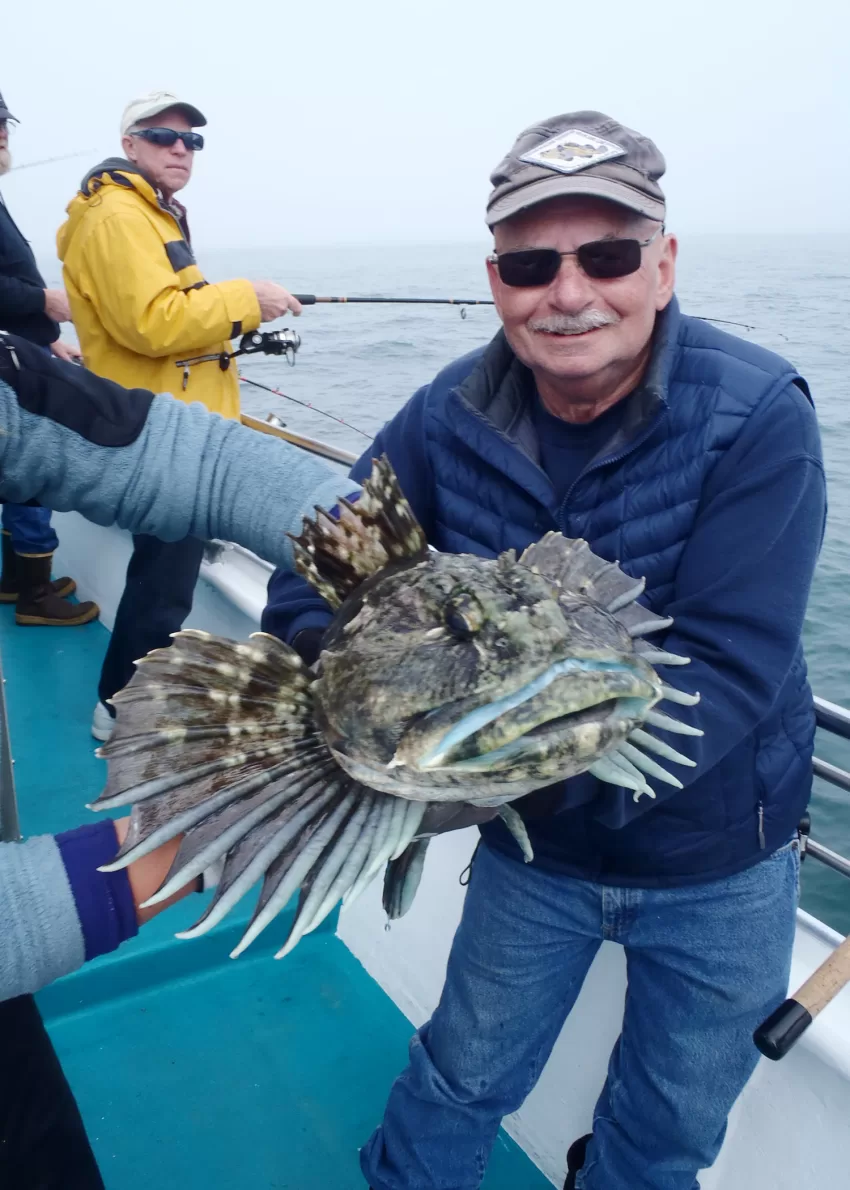Newport, Ore. – Joe Zoellin knows that, on this day, he is a man of privilege.
Zoellin’s jigging for rockfish from a charter boat atop a Cape Falcon reef that normal anglers aren’t allowed to fish. He’s doing it for free, and in the name of science.
Zoellin is one of dozens of anglers helping biologists unlock a few secrets of bottomfish species in Oregon’s Marine Reserves, the state’s only near-shore research and protection areas of their kind. He’s a volunteer in the program’s hook-and-line survey, a way for everyday anglers to help biologists glean snapshots of what’s happening in Oregon’s nearshore habitats.
“It’s been more fun than you could possibly imagine,” Zoellin says. “You get to go out and fish, learn something from the biologists and give back a bit. “
In a way, it also feels a bit like he’s cheating.
“I do, I do, because no one else gets to come out here,” Zoellin says.
That’s one of the lures attracting volunteer anglers like Zoellin to a Marine Reserves Program survey that taps community support to catch and release bottomfish that become actual data for scientists in this ODFW program.
During the surveys, private commercial boats — usually charters – contract with the agency to take volunteer anglers who catch rockfish in key underwater reefs. They focus within marine reserves where all other fishing is banned as well as comparison areas outside of them.
Each fish caught is identified by on-board Marine Reserves biologists, measured, checked for body condition and quickly released.
This recent group of Zoellin and nine other volunteer anglers caught and released 100 rockfish across 13 different species, including cabezon, lingcod and even rare tiger rockfish as well as the more plentiful black rockfish.
“It’s so much fun fishing with these guys and catching so many beautiful fish,” says volunteer angler Jim Stuller of Salem. “I don’t think I’ve ever caught a tiger. That alone will keep me coming back.”
When compared to data from nearly identical fishing efforts dating back as far as 2010, marine scientists can track changes in catch rates, species caught and their sizes from before and after marine reserve protections went into place.
This growing data set not only will help reveal changes to marine life within reserve areas but also create more clarity to the murky world of Oregon’s near-shore reefs.
“It helps us try to understand the health of these populations and how they change based on different ocean conditions,” Marine Reserves Program Leader Lindsay Aylesworth says.
For instance, hook-and-line surveys have helped show that angler catches drop when dissolved oxygen levels in the ocean drops. The drop in dissolved oxygen also correlates to wind shifts.
Hook-and-line anglers get to learn some of these ocean nuances as many hopscotch into various marine reserves with familiar faces fishing next to them.
“I love seeing the same people over the past four years,” Stuller says. “And there’s nothing like catching big fish in the reserves, and we do it for free. I feel lucky every time I get to do this.”
The hook-and-line surveys are one of four key ways fish are surveyed in the reserves and outside comparison areas where normal angling is allowed. The others are visual surveys, such as trained volunteer SCUBA divers and other contracted commercial boats from which stationary cameras are lowered into the reefs as well as a remote underwater roving video camera.
Enacted by the Oregon Legislature in 2009, the Marine Reserves Program includes five actual marine reserves and nine protected areas that together cover nine percent of Oregon’s near-shore ocean waters. The reserves, where no plants or animals can be removed and where development is banned, are underwater listening stations tracking ocean changes including fish, invertebrate and algal communities. It is the first long-term nearshore ocean conservation and monitoring program run by the state of Oregon and includes cutting-edge research on the economic, social and cultural dynamics of the Oregon coast and coastal communities. The program is funded through state general fund dollars and not sport or commercial fishing fees.


.png)